
Feel free to add tags, names, dates or anything you are looking for
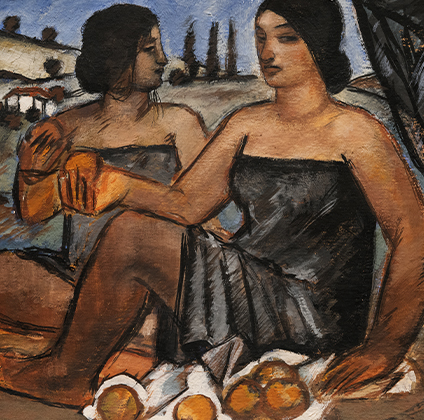
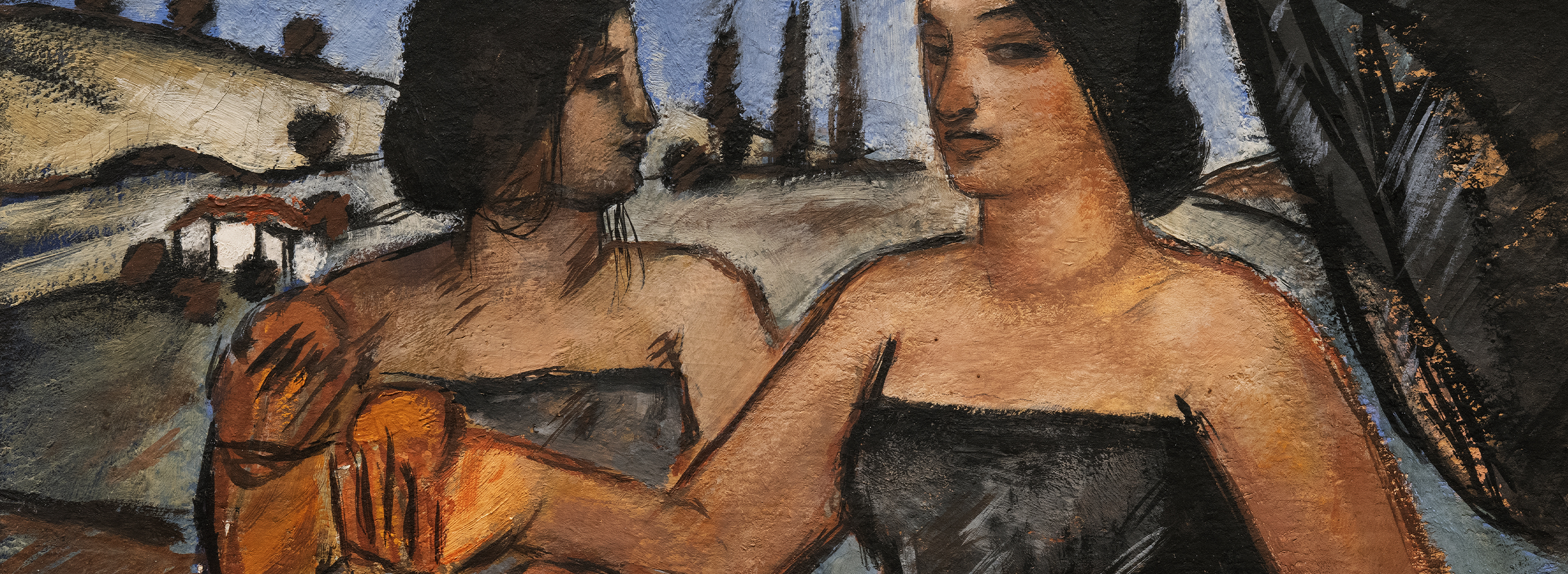
Ioseb (Soso) Gabashvili (სოსო გაბაშვილი) was a graphic artist, painter, and stage and film designer who made a significant impact on 20th-century Georgian art by way of his distinctive artistic style and modernist approach.
Ioseb Gabashvili's creative work unconsciously occupies a place in the thoughts of many people from an early age, since he produced impressive illustrations for Georgian fairy tales and children's books. The books he illustrated will be remembered as works of art, leaving lasting and significant artistic impressions that will remain with the reader forever. Nevertheless, Soso Gabashvili's creative work is far more comprehensive and diverse. He was a graphic artist, painter, and stage and film designer. In every field he pursued, Ioseb Gabashvili was always positioned on solid academic grounds; yet at the same time, he thought in a modernist way. He not only delved into the works of old masters, studying their characteristic techniques, but as is evident from his artworks, he was also undoubtedly acquainted with the paintings of modernist artists such as for instance Manet and Cézanne. This comes as no surprise, since during different stages of his education — initially at the Lewandovski Gymnasium for Nobility, and later at the Tbilisi State Academy of Arts (1926-1930) – his teachers included the renowned sculptor Iakob Nikoladze, along with esteemed artists such as Iosif Charlemagne, Yevgeny Lanceray, and Gigo Gabashvili. In addition to mastering professional techniques, the aspiring artist had the privilege of being given a comprehensive education in ancient and contemporary art by his teachers.
Although in those years formalist experiments were not welcomed at the Academy of Arts, Ioseb Gabashvili's works from his student days demonstrate a keen interest in cubism. He portrayed still-life and animate subjects using flat, angular shapes accompanied with colors that were deliberately flat and contrasting.
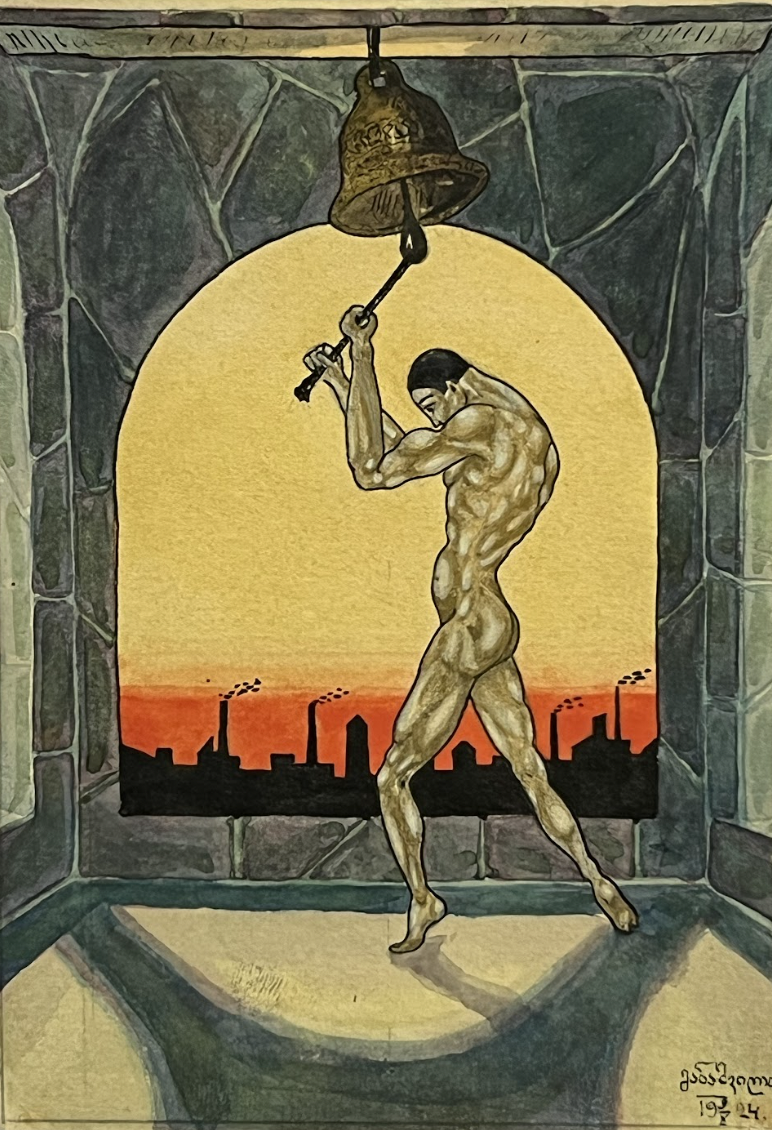
Ioseb Gabashvili. “Untitled.” Watercolor on paper, 13,5×9. 1924
When Soso Gabashvili emerged as an artist in the late 1920s and early 1930s, it happened to be a globally contentious period. Artists were confronted with challenging expectations under the prevailing fascist and communist regimes. In the Soviet Union, socialist realism was being established by the state, while the modernist and avant-garde movements still held forth. Soso Gabashvili stands out among the rare few artists who successfully upheld their artistic principles, remaining loyal to the modernist tradition that by that time had become a relic of the past. He accomplished this feat by adhering to the principles that he had acquired during the early years of his professional development, while at the same time incorporating the requirements of realism. This path led the artist to almost the same results achieved by Western European and South American artists, who had earlier been representatives of the elite avant-garde, but who were now responding to the desire to conform to classical academic principles with the so-called ‘new realism’ – as Paul Wood describes it, “a new realism implied based on a combination of the object and the formal and technical legacy of cubism.” (Realism, Rationalism, Surrealism: Art Between Wars. Yale University Press, 1994: 327).
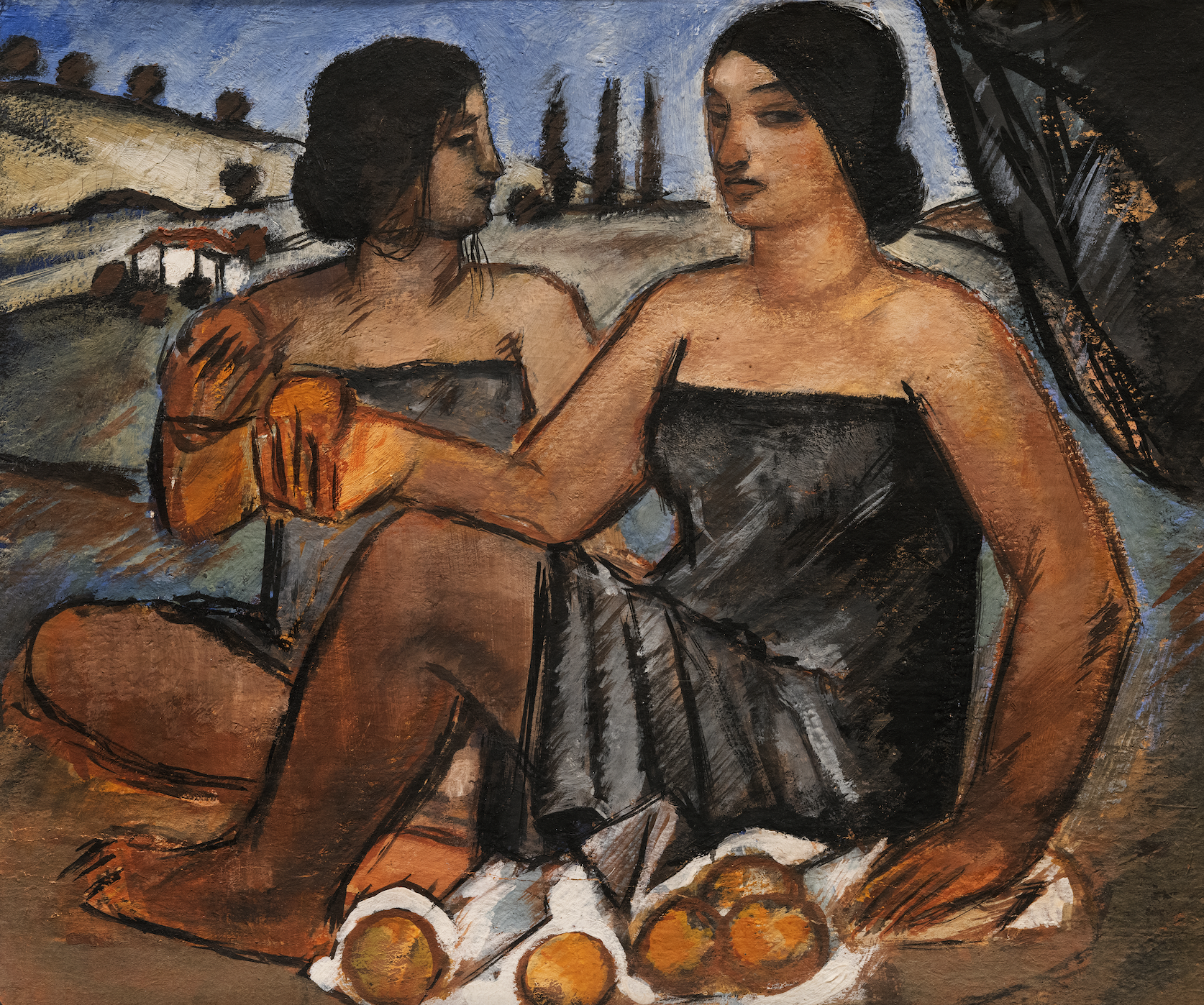
Soso Gabashvili. Women. Gouache, cardboard. 21x24,5 cm. 1933. This work is part of ATINATI Private Collection
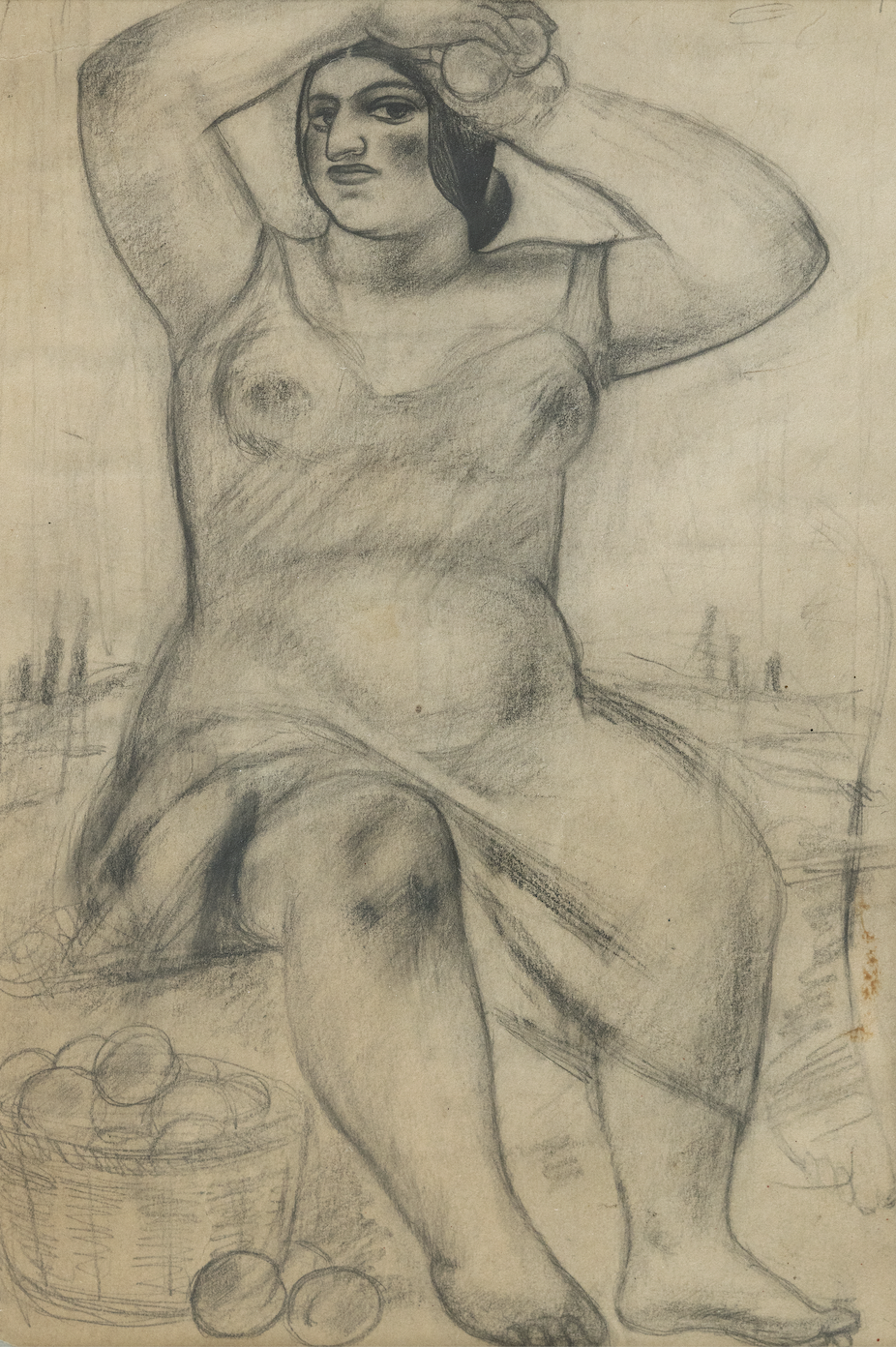
Ioseb Gabashvili. Figure. Paper, pencil. 27x18cm. 1931. This work is part of ATINATI Private Collection
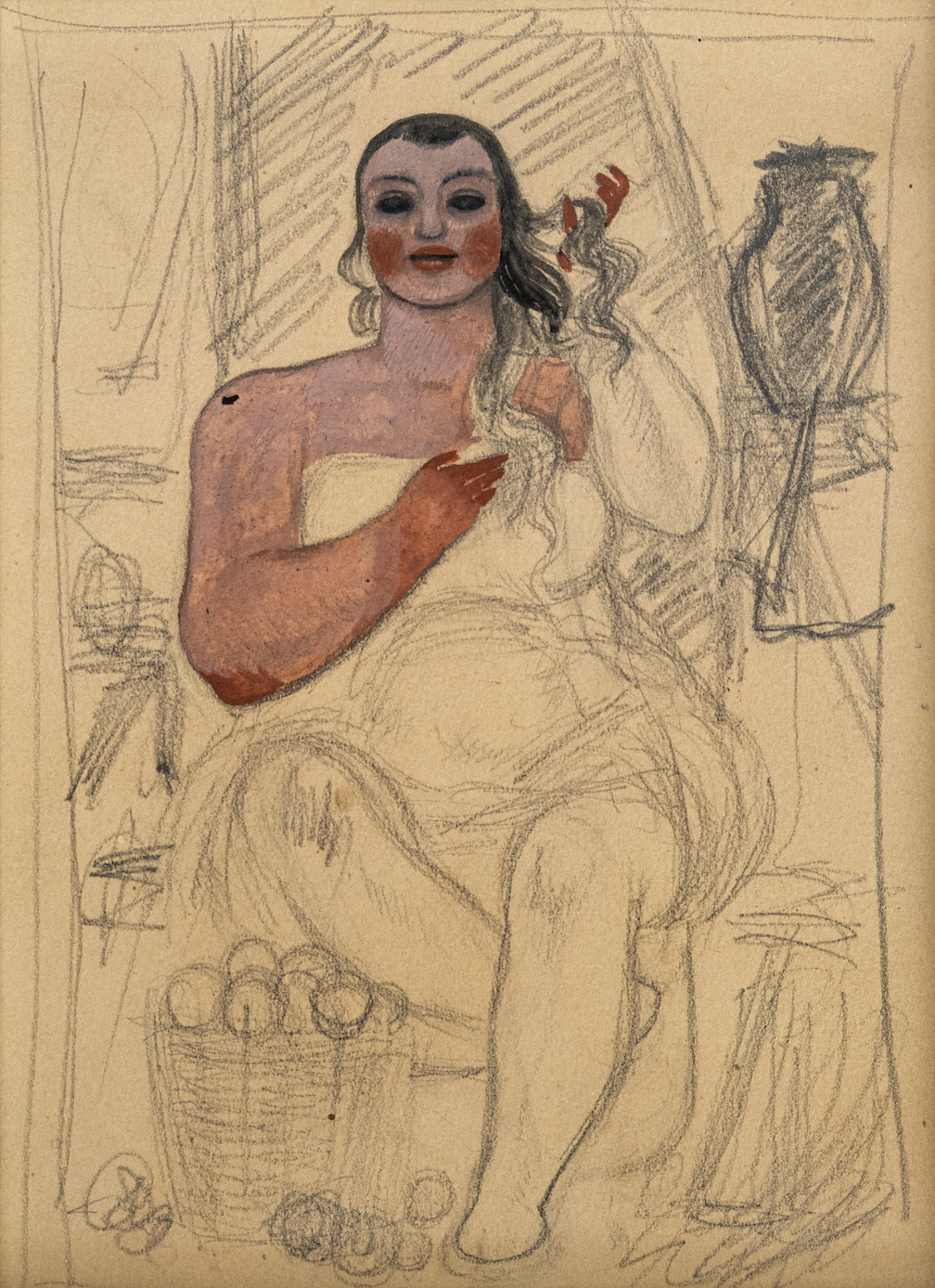
Ioseb Gabashvili. “Sketch”. Paper, pencil, gouache. 17x14cm. 1931. This work is part of the ATINATI Private Collection
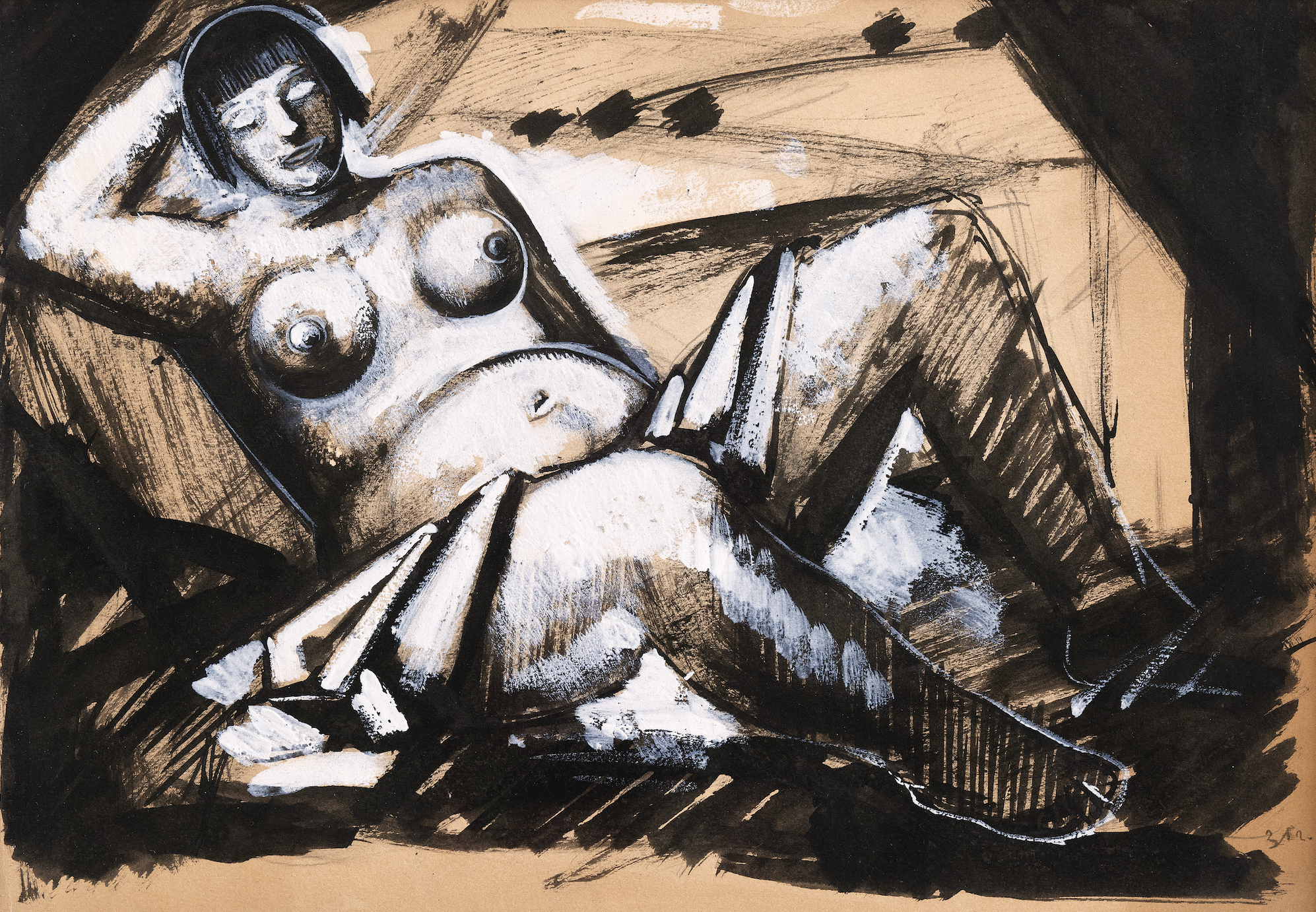
Ioseb Gabashvili. Nude figure. Cardboard, gouache. 32.5x22.5cm. 1931. This work is part of ATINATI Private Collection
Soso Gabashvili's series featuring images of a full-figured woman aligns with the aforementioned trend, occupying a distinct place in his creative work between 1932 and 1935. This series is close to Pablo Picasso's depictions of women during his "classicist" period. Before us is a healthy woman with her feet firmly on the ground; she is vibrant, and often depicted with an apple in her hand or a basket full of apples. She may be observed strolling down the street or relaxing in the bosom of nature, half-dressed or half-naked, as model or muse, presenting herself as direct yet representative, both realistic and unrealistic. She symbolizes fertility and gathers the harvest. One could interpret this as the artist's witty response to the portrayal in social realism of exclusively robust and industrious persons.
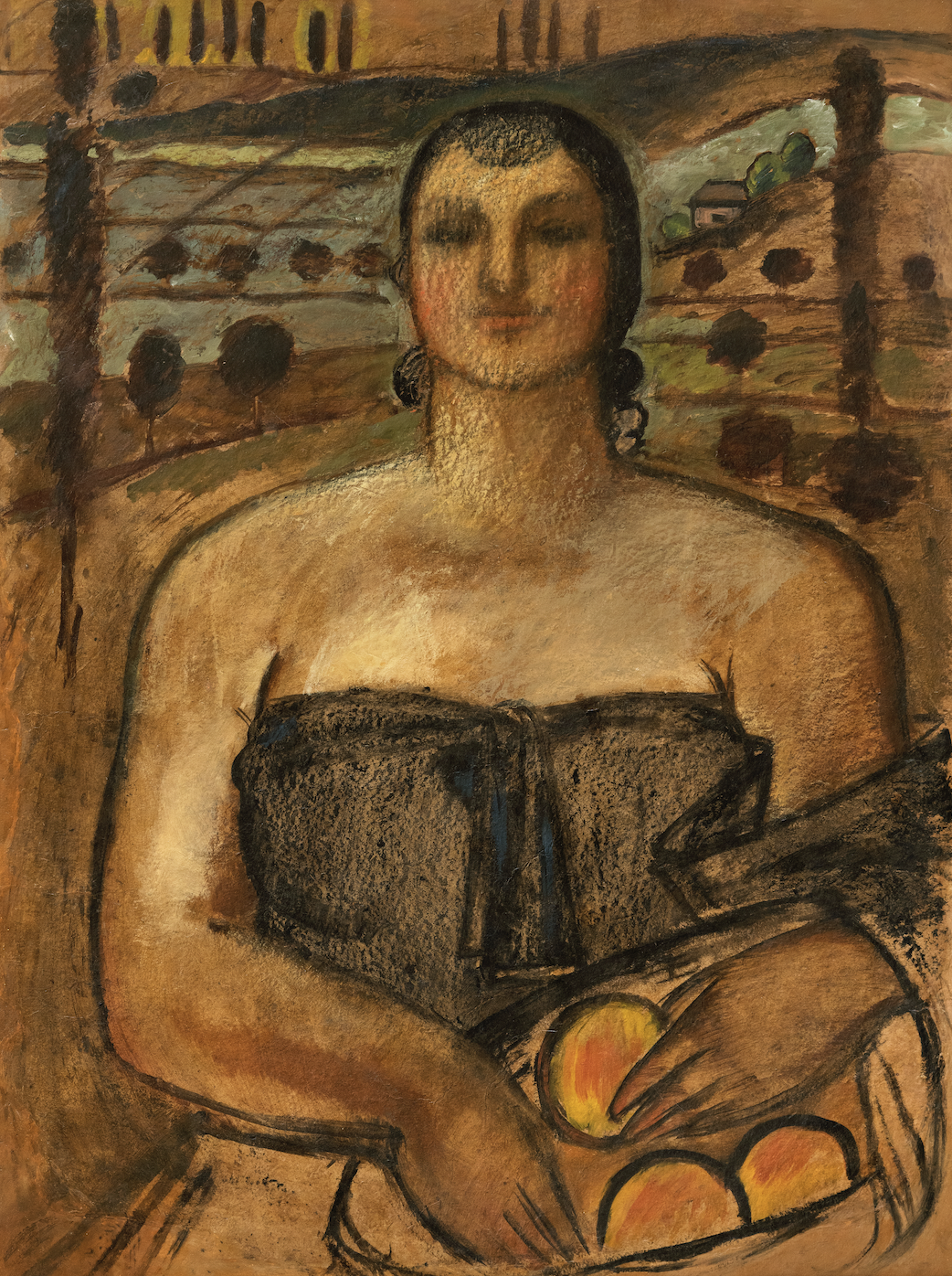
Ioseb Gabashvili. “Woman with peaches”. Canvas, cardboard, tempera. 95x71.5 cm. 1935. This work is part of ATINATI Private Collection
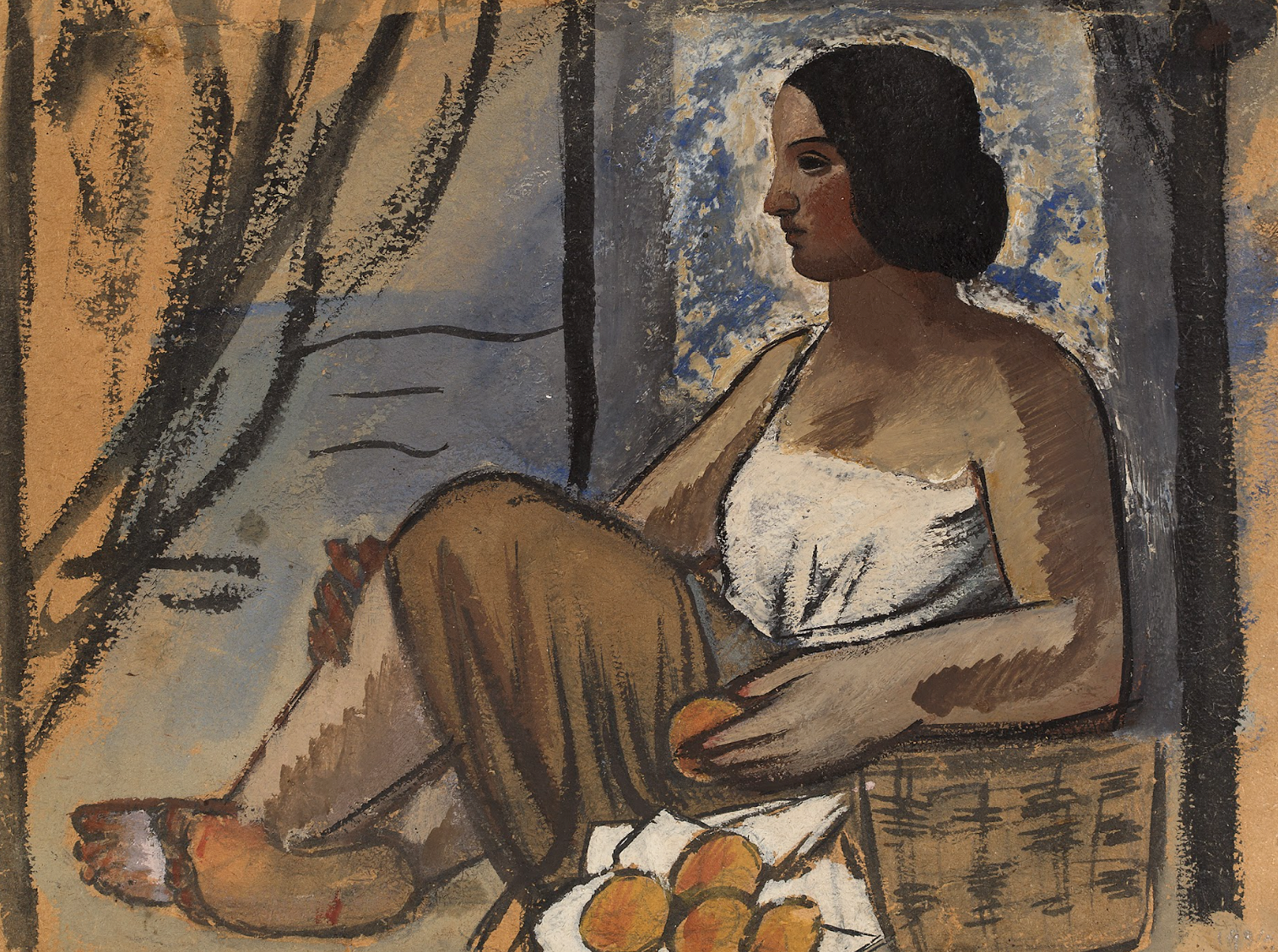
Ioseb Gabashvili.“The Figure."Mixed media on paper. 26×17. 1932
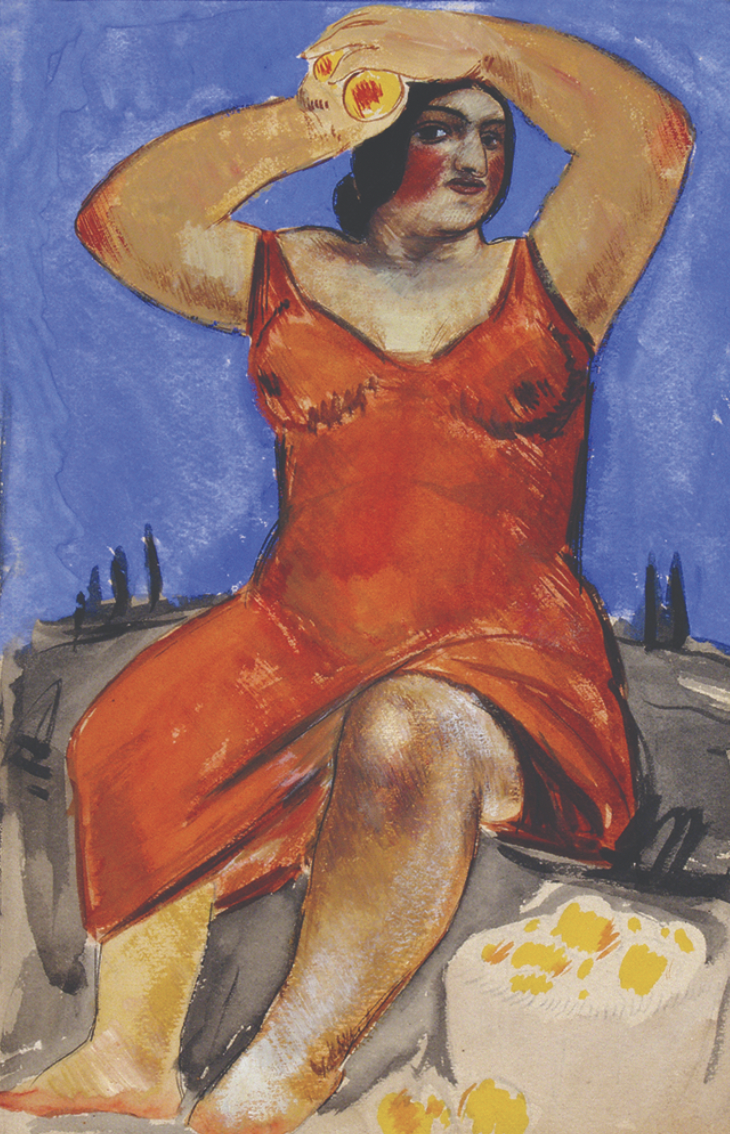
Ioseb Gabashvili. “The woman with peaches.” Gouache on cardboard, 24×30. 1932
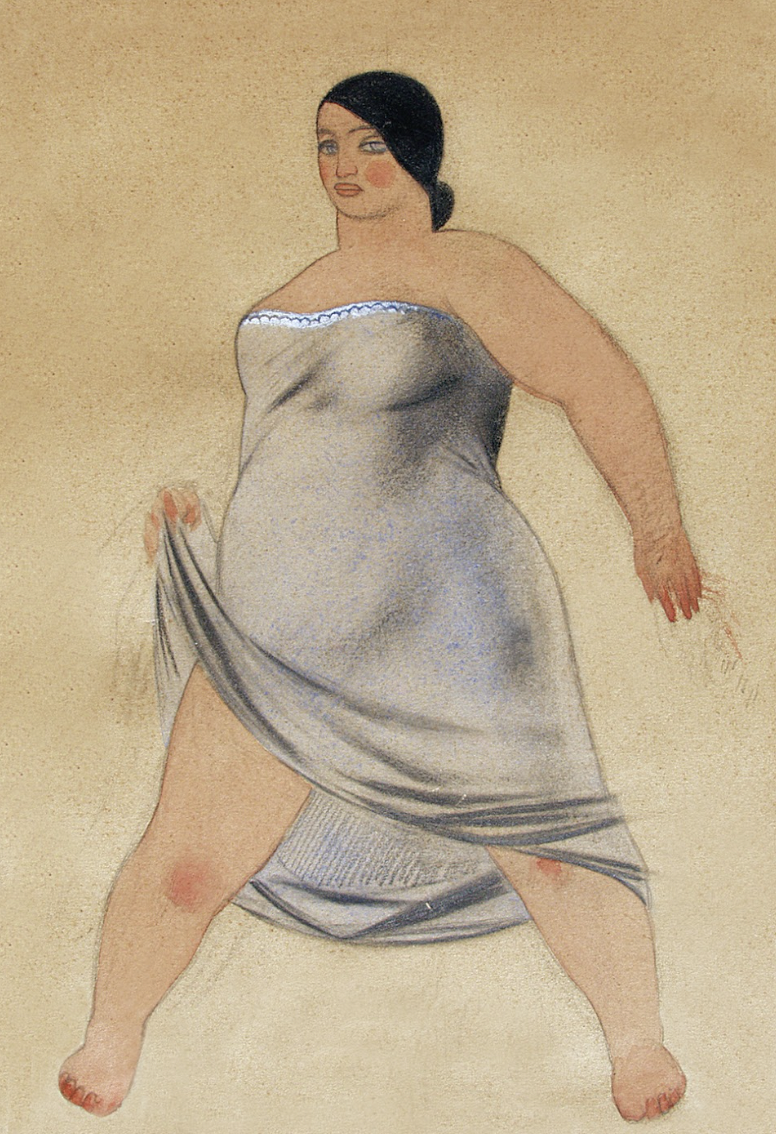
Ioseb Gabashvili.“The Figure". Gouache on paper. 29×25. 1932-1933
Firdawsi's "Shahnameh" (published in 1935), which was illustrated by Ioseb Gabashvili, is the finest example of book art. Similar to when he was working on other books, in this case, the artist relied on samples of late medieval Georgian and Persian manuscripts. The study of these manuscripts served as a foundation for the artist's development of his own characteristic modern and distinctive artistic style. Gabashvili's plain, ornamental, colorful, image-rich illustrations, with flexible outlines that bear a powerful artistic load, not only grace the book's pages as artistic illustrations, but also thoughtfully enrich the volume and deepen its content. Moreover, the artist personally crafted the book's fly leaves, vignettes, and all the graphic insertions – seamlessly binding them together into a cohesive whole.
Gabashvili's illustrations of Georgian fairy tales and embellishments for children's plays staged at the Theater for Youth reveal the artist’s profound familiarity with ancient Georgian architecture and his comprehensive study of Georgian ornaments. He processed these sources graphically, comprehended their decorative nature, and presented them to us as innovative artistic details within his works. For this reason, his illustrations are always stylistically bound, the direct fruit of his vision; yet at the same time truly "Georgian," because he was able to embody and generalize these essential qualities.
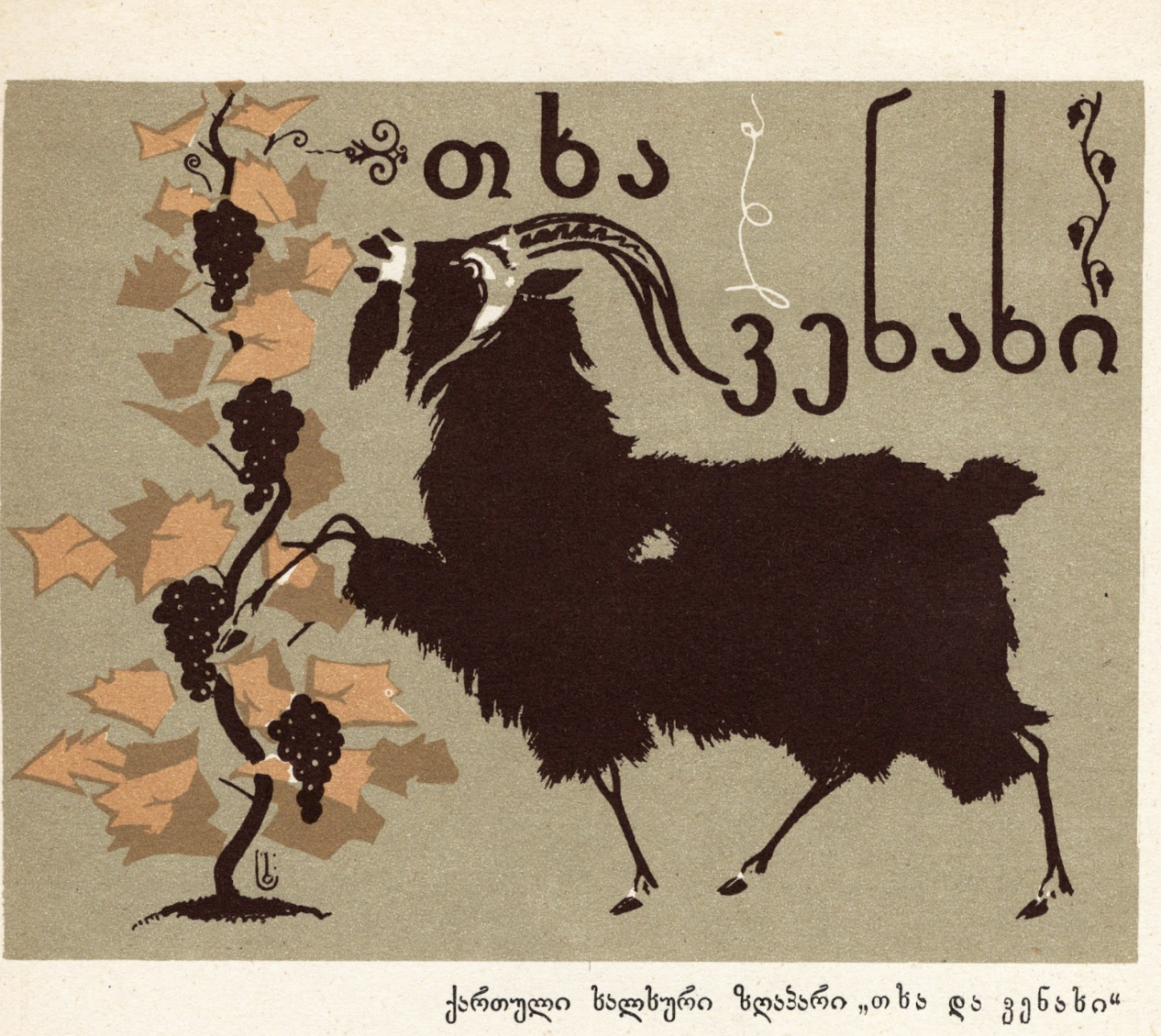
Ioseb Gabashvili. Designs for a folk poem “The Goat and Vineyard.” From the book “Ioseb Gabashvili; for children.” Tbilisi: Nakaduli, 1960

Ioseb Gabashvili. Designs for a folk poem “The Goat and Vineyard.” From the book “Ioseb Gabashvili; for children.” Tbilisi: Nakaduli, 1960
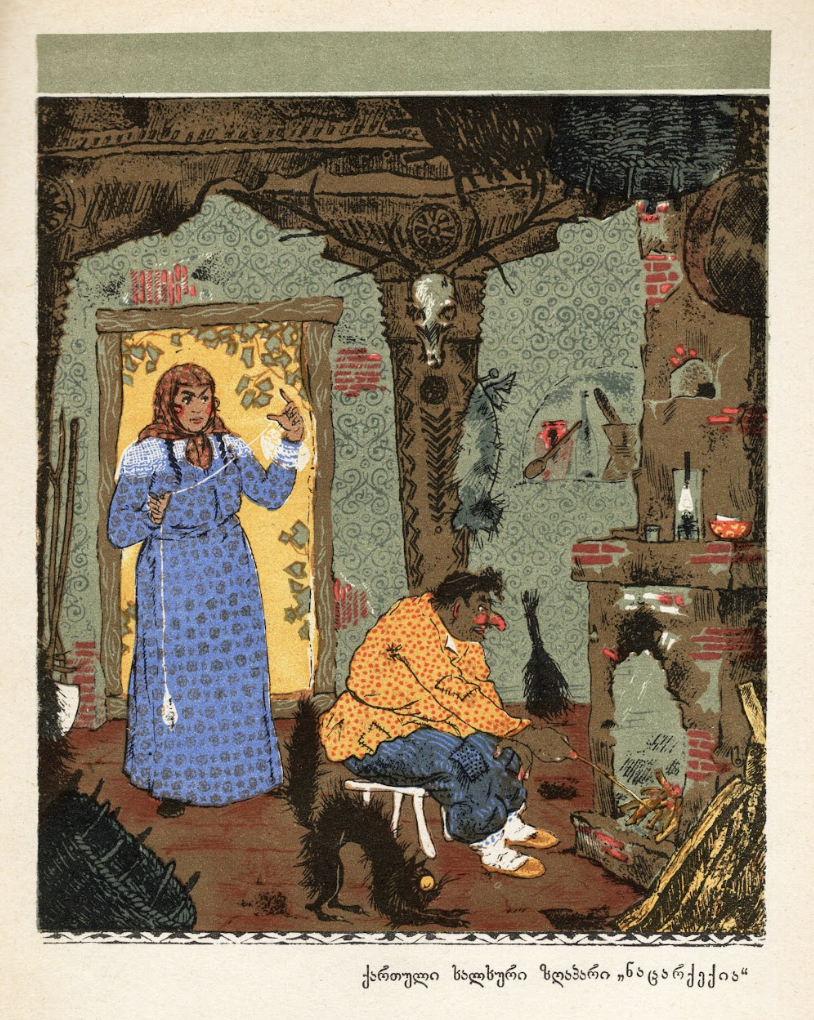
Ioseb Gabashvili. Illustration for a tale “Natsarkekia.” From the book “Ioseb Gabashvili; for children.” Tbilisi: Nakaduli, 1960
Based on the abovementioned, it comes as no surprise that, even during Gabashvili’s lifetime, the idea took root that thanks to his efforts, Georgian children's book illustration was developed as a serious vocation during the Soviet period, acquiring a distinct identity and national character (Beridze, Vakhtang, Nina Ezerskaia: Iskusstvo Sovetskoi Gruzii (1921-1970), Moskva, Sovetski Khudoznik, 1975: 122). In the role of graphic artist, Ioseb Gabashvili collaborated with various publishing houses, including the creation of illustrations for magazines (including the satirical magazine "Niangi"). He also produced posters.
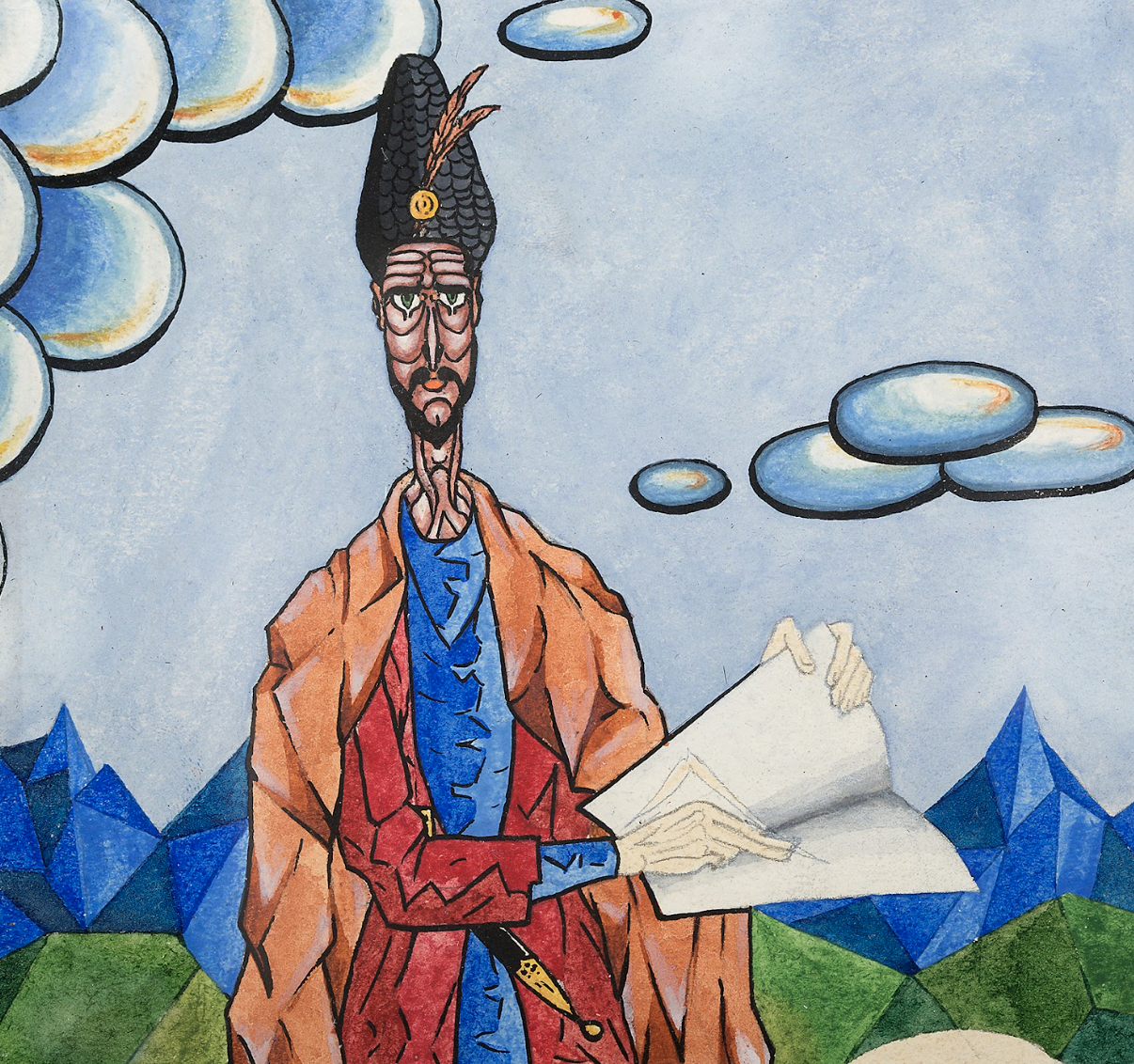
Ioseb Gabashvili. “The poet Shota Rustaveli.” Mixed media on paper, 10×10. 1926
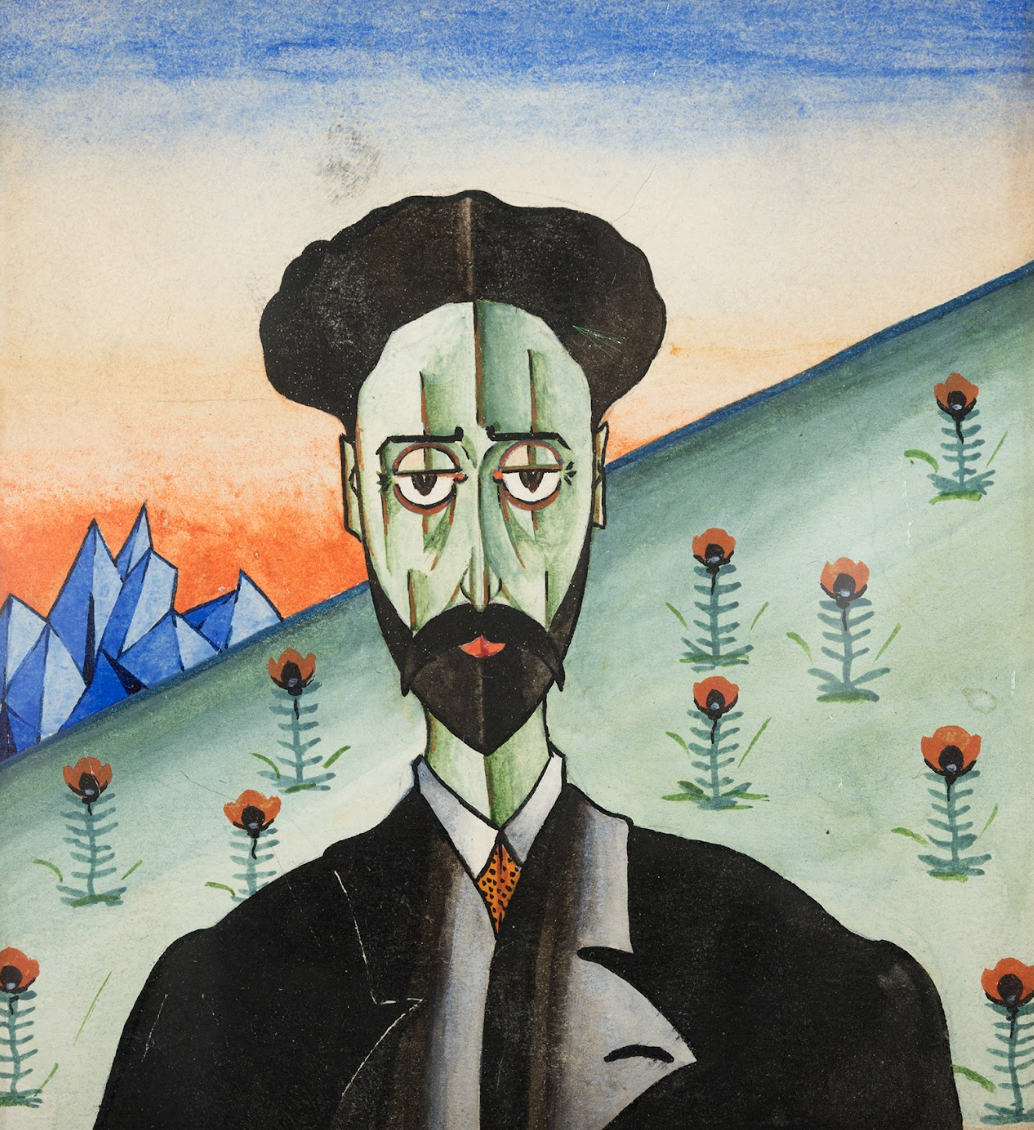
Ioseb Gabashvili.”The writer Jacob Gogebashvili.” Mixed media on paper, 10×9. 1926
Ioseb Gabashvili's artwork portrays a thoughtful artist with a keen eye. His artistic style reflects his personality and demonstrates a modernist vision.